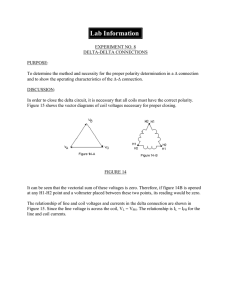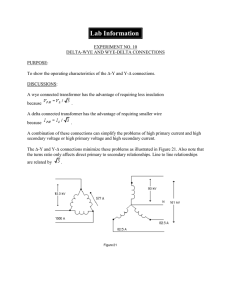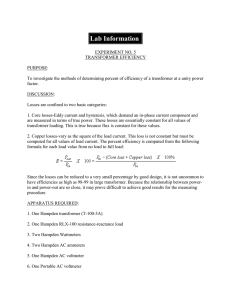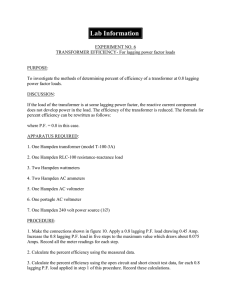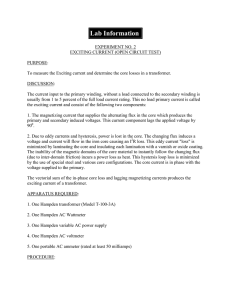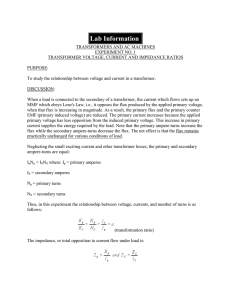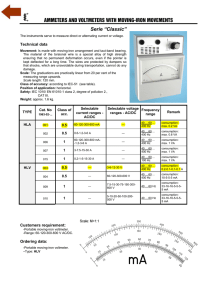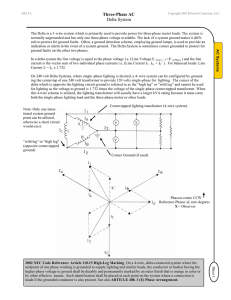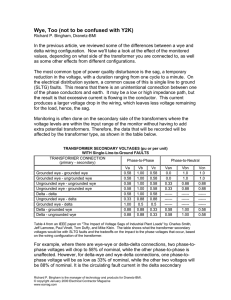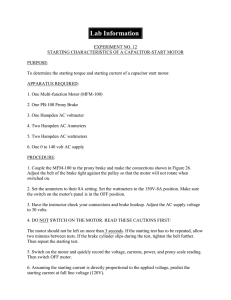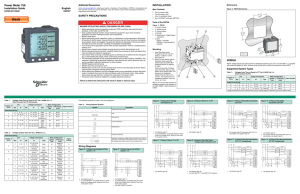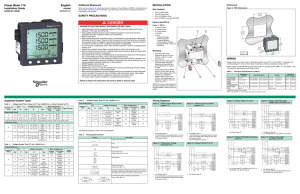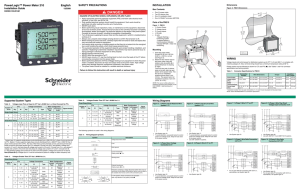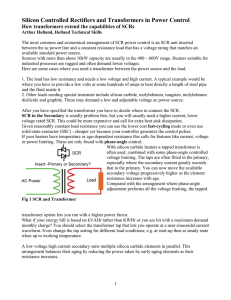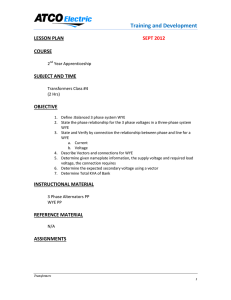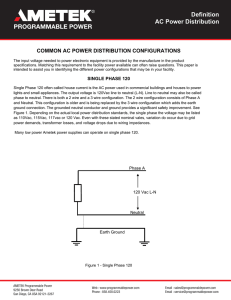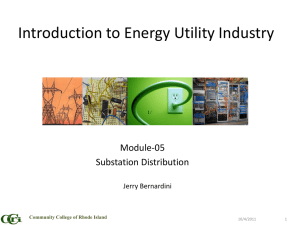Lab Information
advertisement
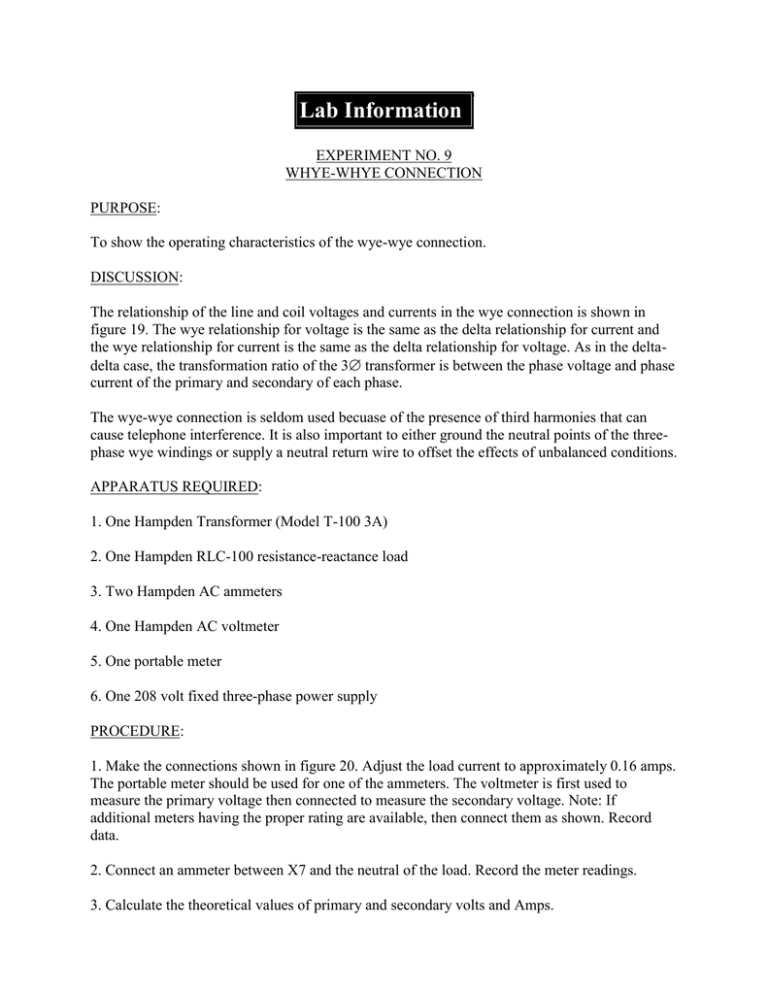
Lab Information EXPERIMENT NO. 9 WHYE-WHYE CONNECTION PURPOSE: To show the operating characteristics of the wye-wye connection. DISCUSSION: The relationship of the line and coil voltages and currents in the wye connection is shown in figure 19. The wye relationship for voltage is the same as the delta relationship for current and the wye relationship for current is the same as the delta relationship for voltage. As in the deltadelta case, the transformation ratio of the 3 transformer is between the phase voltage and phase current of the primary and secondary of each phase. The wye-wye connection is seldom used becuase of the presence of third harmonies that can cause telephone interference. It is also important to either ground the neutral points of the threephase wye windings or supply a neutral return wire to offset the effects of unbalanced conditions. APPARATUS REQUIRED: 1. One Hampden Transformer (Model T-100 3A) 2. One Hampden RLC-100 resistance-reactance load 3. Two Hampden AC ammeters 4. One Hampden AC voltmeter 5. One portable meter 6. One 208 volt fixed three-phase power supply PROCEDURE: 1. Make the connections shown in figure 20. Adjust the load current to approximately 0.16 amps. The portable meter should be used for one of the ammeters. The voltmeter is first used to measure the primary voltage then connected to measure the secondary voltage. Note: If additional meters having the proper rating are available, then connect them as shown. Record data. 2. Connect an ammeter between X7 and the neutral of the load. Record the meter readings. 3. Calculate the theoretical values of primary and secondary volts and Amps. REPORT: Prepare a written report to include the following: 1. A comparison of the measured and calculated values. 2. Explanation of the unbalance with a floating neutral and the effects of the added meter in step 2. 3. All calculation and circuits. EXPERIMENT NO. 9 FIGURE 19 FIGURE 20
